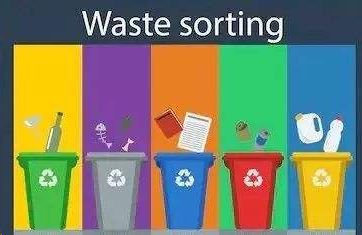Swiss “Worry” about No Garbage
Recently, garbage classification has become a hot topic in China. People not only know the urgency of "garbage siege", but also feel "inconvenient" because of the complexity of garbage classification.
However, there is a Nordic country that needs to import from abroad because of the high efficiency of waste classification, resulting in insufficient domestic waste.
The country is Sweden.
 Once upon a time, Sweden was full of garbage and sewage. Later, the government made up its mind to harness the environment, and garbage classification became the top issue. The Swedish government has tried to set up supervisors at garbage collection points to inspect and punish the perpetrators one by one. But the Swedes felt that the measure was too radical and, with strong opposition, the government had to stop.
Once upon a time, Sweden was full of garbage and sewage. Later, the government made up its mind to harness the environment, and garbage classification became the top issue. The Swedish government has tried to set up supervisors at garbage collection points to inspect and punish the perpetrators one by one. But the Swedes felt that the measure was too radical and, with strong opposition, the government had to stop.
Later, the Swedish government included garbage sorting in the national education program. Children began to learn relevant knowledge from kindergarten. After a generation of efforts, the sorting rules are already the daily life of Swedes. Glass bottles should be colored and colorless, paper should be divided into newspapers and cardboard boxes; bottles should be cleaned. 。 Bottle cap and bottle body should be separated; broken table lamp should also be divided into light bulb, metal and plastic.
 It's also possible if someone is lazy and unwilling to classify carefully. Swedish residents pay garbage disposal fees every year. The less garbage, the lower the cost; the more thoroughly the garbage is sorted, the cheaper the charge is. If mixed investment, the price will double. For many people, classification is preferable. Moreover, Sweden has a deposit system for beverage bottles. Consumers pay for a bottle of mineral water, including the deposit of the bottle, as long as they are placed in a special recycling machine, they can get back the deposit paid before. Under this operation, the recovery rate of Swedish bottles and cans reached 93%, far surpassing that of the United States and the United Kingdom.
It's also possible if someone is lazy and unwilling to classify carefully. Swedish residents pay garbage disposal fees every year. The less garbage, the lower the cost; the more thoroughly the garbage is sorted, the cheaper the charge is. If mixed investment, the price will double. For many people, classification is preferable. Moreover, Sweden has a deposit system for beverage bottles. Consumers pay for a bottle of mineral water, including the deposit of the bottle, as long as they are placed in a special recycling machine, they can get back the deposit paid before. Under this operation, the recovery rate of Swedish bottles and cans reached 93%, far surpassing that of the United States and the United Kingdom.
In addition, many supermarkets in Sweden offer free kitchen waste paper bags. These paper bags are  simple and beautiful, with sealed seals, and can be degraded with food. Besides paper bags, there are also degradable plastic bags beside kitchen waste bins. Residents were also asked to seal the bags tightly in order to avoid smelling. In this way, bags of clean garbage are arranged in an orderly manner in the garbage can. There are central garbage collection stations next to many residential districts, from which various pipelines extend into the ground, connecting different kinds of garbage cans. After residents pay by credit card, they can open the box door and put the garbage in it. Once filled, the valve opens automatically, and garbage collectors rush down to the big box of the central collection station, driven by strong wind. Every two weeks, trucks come to transport containers to the appropriate processing centers.
simple and beautiful, with sealed seals, and can be degraded with food. Besides paper bags, there are also degradable plastic bags beside kitchen waste bins. Residents were also asked to seal the bags tightly in order to avoid smelling. In this way, bags of clean garbage are arranged in an orderly manner in the garbage can. There are central garbage collection stations next to many residential districts, from which various pipelines extend into the ground, connecting different kinds of garbage cans. After residents pay by credit card, they can open the box door and put the garbage in it. Once filled, the valve opens automatically, and garbage collectors rush down to the big box of the central collection station, driven by strong wind. Every two weeks, trucks come to transport containers to the appropriate processing centers.
Sweden produces 4 million tons of garbage annually, while only 1% of the garbage is landfilled, that is to say, 99% of the garbage is recycled. Kitchen waste, converted into biogas, provides energy for cars and buses, and the remaining residue is used for composting. And the biggest use of garbage recycling is incineration for power generation.

Now, almost everyone in Sweden knows that four tons of garbage equals one ton of fuel energy. Their distress is that there is not enough garbage. Data show that the Nordics produce 150 million tons of garbage a year, while Nordic energy companies demand 700 million tons of garbage. The gap is so big that Nordics are worried. Without garbage, it means that without fuel, urban heating and power supply will be affected. In contrast, China produces nearly 1 billion tons of garbage annually, most of which are buried and nowhere to be buried.





